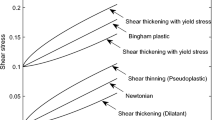Abstract
Hot compression tests were carried out on the duplex α + β leaded brass CuZn39Pb3 in temperature range of 600–800 °C and at strain rates of 0.001–1 s−1. A self-consistent model was used to analyze the flow behavior of the constituents and the material. A linear viscoplastic model was used to relate the flow stress of β and α + β composite to strain rate and the corresponding viscosity parameters were calculated at various deformation conditions. Using the viscosity parameters of β and α + β and the volume fractions of the constituents, the viscosity parameter of α was calculated. The values of the viscosity-like parameters and strain rate sensitivity for β and α + β composite were calculated using the nonlinear powerlaw viscoplastic equation. The results showed that the flow stress of α calculated using the self-consistent model was considerably higher than that of β. The difference could be attributed to the lower Zn content in α. The flow stress of α + β composite was calculated using the law of mixture rule. The law of mixture modeling of α + β composite for the iso-strain condition resulted to the overestimation of flow stress. The difference between the experimental and predicted results was attribute to the strain partitioning between α and β.






Similar content being viewed by others
References
M. Sharififar and S.A.A. Akbari Mousavi: Tensile deformation and fracture behavior of CuZn5 brass alloy at high temperature. Mater. Sci. Eng., A 594, 118 (2014).
Y-H. Xiao, C. Guo, and X-Y. Guo: Constitutive modeling of hot deformation behavior of H62 brass. Mater. Sci. Eng., A 528, 6510 (2011).
M. Hatherly, A.S. Malin, C.M. Carmichael, F.J. Humphreys, and J. Hirsch: Deformation processes in hot worked copper and α brass. Acta Metall. 34, 2247 (1986).
D. Padmavardhani and Y.V.R.K. Prasad: Characterization of hot deformation behavior of brasses using processing maps: Part I, β brass and α-β brass. Metall. Trans. A 22, 2993 (1991).
A. Momeni, G.R. Ebrahimi, and H. Faridi: Effect of chemical composition and processing variables on the hot flow behavior of leaded brass alloys. Mater. Sci. Eng., A 626, 1 (2015).
L. Blaz, Z. Konior, and T. Majda: Structural aspects of α/β transformation in hot deformed CuZn-39Pb3 alloy. J. Mater. Sci. 36, 3629 (2001).
H. Farnoush, A. Momeni, K. Dehghani, J.A. Mohandesi, and H. Keshmiri: Hot deformation characteristics of 2205 duplex stainless steel based on the behavior of constituent phases. Mater. Des. 31, 220 (2010).
A. Momeni, S. Kazemi, and A. Bahrani: Hot deformation behavior of microstructural constituents in a duplex stainless steel during high-temperature straining. Int. J. Miner., Metall. Mater. 20, 953 (2013).
S.S. Babu, J. Livingston, and J.C. Lippold: Physical simulation of deformation and microstructure evolution during friction stir processing of Ti-6Al-4V alloy. Metall. Mater. Trans. A 44, 3577 (2013).
L. Sahebdel, S.M. Abbasi, and A. Momeni: Microstructural evolution through hot working of the single-phase and two-phase Ti-6Al-4V alloy. Int. J. Mater. Res. 102, 41 (2011).
Y.C. Lin, J. Zhang, and J. Zhong: Application of neural networks to predict the elevated temperature flow behavior of a low alloy steel. Comput. Mater. Sci. 43, 752 (2008).
X. Shu, S. Lu, K. Wang, and G. Li: A comparative study on constitutive equations and artificial neural network model to predict high-temperature deformation behavior in Nitinol 60 shape memory alloy. J. Mater. Res. 30, 1988 (2015).
A. Momeni and K. Dehghani: Hot working behavior of 2205 austenite-ferrite duplex stainless steel characterized by constitutive equations and processing maps. Mater. Sci. Eng., A 528, 1448 (2011).
S. Spigarelli, M. El Mehtedi, P. Ricci, and C. Mapelli: Constitutive equations for prediction of the flow behavior of duplex stainless steels. Mater. Sci. Eng., A 527, 4218 (2010).
J.H. Kim, J.T. Yeom, N.K. Park, and C.S. Lee: Constitutive analysis of the high-temperature deformation behavior of single phase α-Ti and α + β Ti-6Al-4V alloy. Mater. Sci. Forum 539–543, 3607 (2007).
X.G. Fan and H. Yang: Internal-state-variable based self-consistent constitutive modeling for hot working of two-phase titanium alloys coupling microstructure evolution. Int. J. Plast. 27, 1833 (2011).
J.H. Kim, S.L. Semiatin, Y.H. Lee, and C.S. Lee: A self-consistent approach for modeling the flow behavior of the alpha and beta phases in Ti-6Al-4V. Metall. Mater. Trans. A 42, 1805 (2011).
A. Momeni, K. Dehghani, and M.C. Poletti: Law of mixture used to model the flow behavior of a duplex stainless steel at high temperatures. Mater. Chem. Phys. 139, 747 (2013).
S. Spigarelli, M. El Mehtedi, M. Cabibbo, F. Gabrielli, and D. Ciccarelli: High temperature processing of brass: Constitutive analysis of hot working of Cu–Zn alloys. Mater. Sci. Eng., A 615, 331 (2014).
J. Luo, M. Li, X. Li, and Y. Shi: Constitutive model for high temperature deformation of titanium alloys using internal state variables. Mech. Mater. 42, 157 (2010).
Y.V.R.K. Prasad and S. Sasidhara eds.: Hot Working Guide, a Compendium of Processing Maps (ASM, Materials Park, Ohio, USA, 1997); p. 203.
P. Perrot: Non-ferrous metal systems. Part 2. In Landolt-Börnstein—Group IV Physical Chemistry, Vol. 11C2 (G. Effenberg, S. Ilyenko, eds.; Berlin: Springer, 2007); p. 408.
R. Hill: A self-consistent mechanics of composite materials. J. Mech. Phys. Solids 13, 213 (1965).
P.M. Suquet: Overall potentials and extremal surfaces of power law or ideally plastic composites. J. Mech. Phys. Solids 41, 981 (1993).
Y.C. Lin and X.M. Chen: A critical review of experimental results and constitutive descriptions for metals and alloys in hot working. Mater. Des. 32, 1733 (2011).
Author information
Authors and Affiliations
Corresponding author
Rights and permissions
About this article
Cite this article
Momeni, A. Application of a self-consistent model to study the flow behavior of CuZn39Pb3 at elevated temperatures. Journal of Materials Research 30, 3453–3460 (2015). https://doi.org/10.1557/jmr.2015.337
Received:
Accepted:
Published:
Issue Date:
DOI: https://doi.org/10.1557/jmr.2015.337




